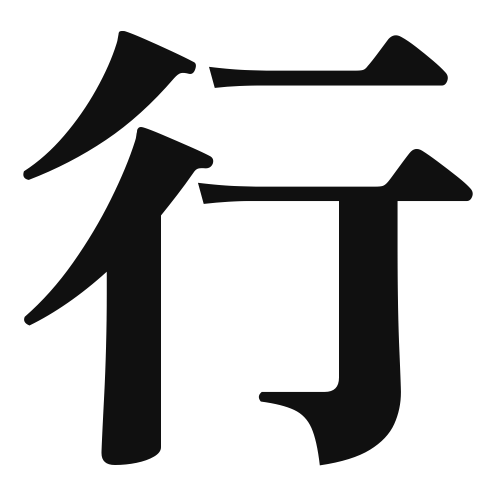1. Overview of Meaning
The kanji “行” (pronounced “kou” or “gyou”) primarily means “to go” or “to conduct.” It can also refer to a line or row, as in a series of items or people.
2. Formation and Radical
Formation of the Kanji: The kanji “行” is a phono-semantic compound, which means it combines both a phonetic and a semantic component. The left part, “行,” represents the meaning related to movement, while the right part is a phonetic element that contributes to its pronunciation.
Radical: The radical for “行” is 行 (kou), which relates to movement or travel.
3. Examples of Usage
Common Words and Phrases: Some frequently used words that include “行” are:
- 行く (iku) – to go
- 行動 (koudou) – action, behavior
- 行列 (gyouretsu) – line, queue
Example Sentences in Daily Conversation:
- 明日、友達と映画に行く予定です。 (Ashita, tomodachi to eiga ni iku yotei desu.) – I plan to go to the movies with my friend tomorrow.
- 駅で行列ができていました。 (Eki de gyouretsu ga dekite imashita.) – There was a line at the station.
4. Synonyms and Antonyms
Similar Kanji: A similar kanji is “進” (shin), which means “to advance” or “to proceed.” While both involve movement, “行” is more general, while “進” implies a forward progression.
Opposite Kanji: An antonym is “止” (shi), which means “to stop.” This represents the cessation of movement, contrasting with the idea of going or moving forward.
5. Cultural and Historical Background
Relation to Japanese Culture: The concept of “行” is deeply embedded in Japanese culture, reflecting the importance of movement and progress in various aspects of life, including travel and personal growth.
Proverbs and Idioms: One common saying is “行く先は分からない” (Ikusaki wa wakaranai), which translates to “The destination is unknown,” emphasizing the unpredictability of life’s journey.
